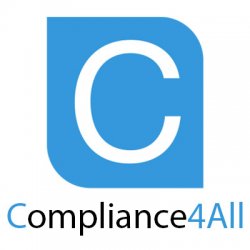Webinar on Rational Predictions for FDA inspections
The webinar covers factors considered by FDA before, during and after an inspection that can be used to predict your inspectional vulnerability. Once you know some key points, you will see that FDA's approach to inspections follows well-established procedures and risk criteria that enables FDA to characterize your firm's compliance. Usually the only way FDA will let you know about your profile is when an official action is indicated. That is not a good thing. Otherwise, you hear very little and even then, you may wait a long time. The cloud of doubt can plague a firm for months.
The webinar will cover standard criteria FDA typically uses to select a firm for inspection, classify a firm's compliance profile and to decide what kind of regulatory follow up is required, if any. The investigator is trained to follow certain procedural guidelines and focus on evidence development. The investigator's questions and the documents they collect give you a reasonable picture of where the investigator is going with the inspection. This information may help firm's make their war room mentality a little more sensible.
Why Should you Attend: FDA's inspectional program is more predictable once you understand FDA's inspection selection criteria and the procedures used to conduct inspections. If you apply basic risk and public health concepts, the handwriting on the wall becomes clearer about the likelihood of an inspection. From an investigator's point of view, a firm's war room activity seems like a sequel to Shakespeare's play, "Much Ado about Nothing."
The investigators thinking and actions typically follow predictable directions and are usually based on information you already know. Whether or not an investigator will find your Pandora's Box of problems requires some skill in interpreting the first and second phase of an inspection. Firms are thinking along the lines of "Are they getting hot? Are they getting cold?" How can you tell? That actually is difficult to determine unless you identify the patterns in the investigator's work. Finally, firms invariably ask the investigator at the end of an inspection, "So how did we do?" You will not get an answer, but if you know how to read a list of inspectional observations noted on FDA's Form 483 (483), you can have a good idea. You just need to know some critical factors. In some cases one inspectional observation is sufficient to prompt a Warning Letter from the FDA. In other cases a multi-page 483 will not be sufficient to prompt a Warning Letter. It is not a trial by quantity. You can learn how to sharpen your predictive skills on how FDA will follow up.
Areas Covered in the Session:
- FDA's annual work plan criteria for inspections
- FDA's inspectional training and standard procedures
- Evidence development strategy
- War room hysteria
- Inspection classification by FDA and follow up
Who Will Benefit:
- Regulatory Affairs Directors / Managers
- Corporate legal counsel
- FDA consultants
- Manufacturing Managers
- Quality Assurance Managers
Contact Detail:
NetZealous - Compliance4All,
161 Mission Falls Lane, Suite 216,
Fremont, CA 94539, USA.
Phone: +1-800-447-9407
Email: [email protected]
http://www.compliance4all.com/
Event Link : http://bit.ly/1GwxA9r
Speaker and Presenter Information
Speaker Profile:
Relevant Government Agencies
Dept of Education, Food Inspections
Event Type
Webcast
This event has no exhibitor/sponsor opportunities
When
Tue, Dec 15, 2015, 10:00am - 11:00am
ET
Website
Click here to visit event website
Organizer
NetZealous - Compliance4All
Join the event conversation:
@Compliance4all





